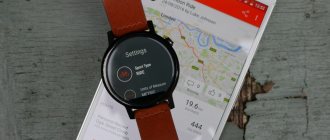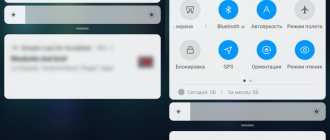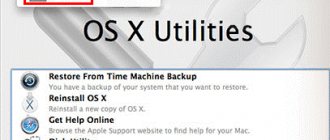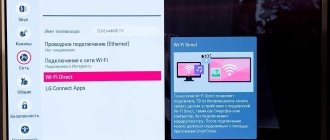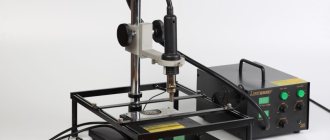The camera is simply gorgeous
I'll start with the main thing - the quality of shooting. I was most interested in whether the Pixel 4 would set a new level of quality or not.
For example, Pixel 2 blew my mind: I tested a lot of phones, but I never came across a better Pixel. I've been shooting a lot, and the photos on the Pixel 3 are great, although I prefer the iPhone when it comes to video.
If Pixel 2 and 3 set the standard in the market, surpassing all competitors in terms of photography, then what about Pixel 4?
Let me start with the fact that the Pixel 4 has an additional camera. The second module helps when shooting distant objects - 2x optical zoom works without loss of quality.
Moreover, Google, using processing algorithms, suggests going further and shooting with an 8x zoom without losing details. At least that's what the theory goes. In practice, the result is not “wow”, but tolerable. You will be able to capture a car in the distance and see its license plates, but it will be difficult to photograph a squirrel in the park. But we're talking about a phone with a tiny sensor, and not a camera with expensive optics. Although we shouldn’t forget about the Huawei P30 Pro, where the zoom works better.
Here's an example in normal mode:
Turn on optical 2x zoom:
And so with eightfold magnification:
Also, the second camera is now used for processing portraits. I won't say that the quality is perfect, but it turns out well.
It would be worth checking the night sky shooting mode with beautiful views of the stars, but I didn’t get any spectacular photos under the current conditions.
I specifically give examples of pictures taken at night; this is the most difficult test for a phone. During the day everything is fine, as you would expect from a flagship. At the same time, I didn’t see any significant difference compared to my “old”, last year’s Pixel 3 XL.
Cameras
Perhaps this section is the most important in Google flagships. Let's start with the front camera. It has an 8-megapixel f/2.0 aperture and uses a ToF sensor to help take high-quality portrait shots. At first glance, the quality of ordinary photos is one of the best, but with portraits everything is not so good.
Let me remind you that the Pixel 3 XL had two front cameras, one with a viewing angle of 70 degrees, the second wide-angle. Now Google has chosen something in between, putting a camera with 90-degree coverage.
The main sensor is still 12 megapixels, f/1.7 aperture, optical stabilization. The maximum available video resolution is 4K at 30 frames per second. Why not 60 frames? Google explained that most users use 1080p, so they focused on this mode, and perhaps for good reason. But as before, the iPhone is superior to its competitor in terms of video shooting.
DxOMark experts gave the Pixel camera a weak rating this time, although Google was one of the first to draw attention to the rating service. However, the Pixel 4 only took eighth place in the ranking. For video capabilities, it was given 101 points, noting the advantages of color rendition, noise reduction, autofocus and stabilization system.
But let's return to the second sensor, which, unfortunately, turned out to be a telephoto camera. 16 MP with f/2.4 aperture and optical stabilization. It provides double optical zoom and 8x hybrid zoom - Super Res Zoom software improvements have minimized quality loss. It really shoots better than the iPhone when it comes to 8x zoom.
Portrait mode
Personally, I'm annoyed by the idea of putting a telephoto instead of the now popular ultra-wide angle. Zoom, of course, is needed, but 2x, in my opinion, is enough for most tasks. A wide angle allows you to look at the shooting scene differently. After I got my first smartphone with a wide-angle lens, I noticed that I took about 70% of all photos with it. There is no such opportunity here and it is not a fact that it will appear next year.
White balance is set using artificial intelligence and it works noticeably better than its competitor, the iPhone. The photographs are still more contrasty and mostly the advantage is given to cool tones.
Now you can manually adjust shadows. This must be done before shooting. The difference in the photo without adjustment and with adjustment is clearly visible in black.
The shadow adjustment tool will appear after manual focusing. Among the small changes in camera applications: double tapping on the screen gives double optical zoom, and if you hold the shutter button for a long time, video shooting will automatically start (I’ve already seen this somewhere) - in parallel with this, a series of pictures are taken.
As part of Night Sight, inspired by photographs of the milky way on the Huawei flagship, they added a new astrophotography mode. It allows you to take beautiful photos of the starry sky without having to dive into technical details.
You go to a place where there is no artificial lighting, put your smartphone on a tripod, launch it, the camera takes 16 photos with shutter speed, aligns them, removes unnecessary movements and you get beautiful pictures of the sky. We haven't tested it yet, but our colleagues at Android Authority have taken sample shots. It really looks amazing, but not everyone will do this.
Macro Portrait on the front camera
As for the night mode and comparison with the iPhone 11 Pro. Apple has finally improved the camera and many of the pictures look very similar in quality. It is noticeable that both smartphones use different algorithms: Pixel 4 uses software, and iPhone 11 Pro makes a longer exposure. Personally, it seems to me that the Pixel 4 still has a little more detail.
Handsome or not?
In the photographs the smartphone looks worse than it actually is. I won’t say that it’s an outstanding beauty - rather, it’s a unique phone, not like the others: without curved screen edges or a rounded body. The protruding plate with camera lenses located on it on the back of the body looks funny and gives the impression that this is such an emotional smiley surprise.
But this is a matter of taste, in any case, in my opinion, it looks better than the separate round cameras in the iPhone 11. Although I still like the minimalist design in the style of Pixel 2 and 3 better.
A large “forehead” catches your eye at the front: Pixel 4 did not fall under the general trend of smaller bezels, which is why it looks strange. If in the same iPhone the “unibrow” is justified by the Face ID system, then the protection here is not so advanced, but we’ll talk about that later. However, a “big-browed” phone does not affect the convenience in any way, you just get used to the fact that there are frames of different widths at the top, bottom and sides.
But the phone has rounded aluminum sides with a pleasant and non-slippery coating, and the matte glass back surface is smooth and flat.
There are almost no small and powerful smartphones left anymore, so the Pixel 4 is a godsend for those who miss small flagships. You say: “How can you call a phone with a 5.7-inch screen small, have you gone completely crazy?” Sorry, but the days of smartphones with 4- or 5-inch displays are long gone. And compared to the others, the fourth “Pixel” is nothing at all.
For testing, we got hold of a phone in the most interesting color. It's officially called Oh So Orange. As a fan of everything orange, I couldn’t calmly pass by and was really looking forward to when they would bring us an orange smartphone. In my opinion, it's more of a coral shade, in the spirit of last year's iPhone XR, but Google thinks otherwise.
A survey of friends showed that opinions differ: some see the glorious orange color here, others do not. But a lot depends on the lighting conditions - in any case, an interesting and unusual shade. Have you seen a lot of orange smartphones over the past year?
What can
The phone does not impress with its bare characteristics; in any case, there are many flagships with the same specifications on sale now. It would be logical to see a smartphone with more interesting hardware than its competitors at the end of 2020, but Google has its own view on such things.
Are there problems with work speed? There are none, everything is fast. Is it possible to evaluate a phone based on benchmark results? It’s easy, but the numbers still don’t give the same feeling that you get when you use a phone. Very fast, very smooth - at least on a new phone. And only experience of use will show what will happen in six months.
Of course, games run with maximum graphics quality, and the 90 Hz screen pleases with smooth scrolling in the menu. But the notorious 90 Hz does not work in all conditions, and the frequency can generally be lowered manually.
OnePlus trolls Google over Pixel 4 issue
Kostya Baranov
October 25, 2019
The phone does not overheat, the RAM is now not 4, but finally 6 GB, so programs in the background hang stably and do not crash. Unfortunately, there is not very much built-in memory; there is no 512 GB or 1 TB version, only 64 or 128 GB of memory. You will say: “You forgive the iPhone for that.” Yeah, only there is a choice, and Google is not increasing its volumes, believing in the power of cloud data storage.
Google Pixel 4 cameras
A major change for Pixels occurred in the main camera unit, where a “telephoto” appeared. In 2020, most smartphones now have ultra-wide-angle lenses, and in some cases even macro lenses, but the Pixel has only “caught up” with telephoto lenses. At the same time, the resolution of the main sensor was 12.2 MP (ƒ/1.7), and the second one was 16 MP (ƒ/2.4). But Google never chased numbers, and placed the main emphasis on the performance of the software. And it still doesn't let the company down.
With good lighting, it's quite easy to take a good shot with the main camera. The sensor focuses very quickly and almost never misses, selects the white balance quite accurately and reproduces colors correctly. In the “take the smartphone out of your pocket and take a photo” mode, the Pixel is really capable of not letting you down in the vast majority of cases. But this is absolutely nothing new.
If previously Google’s algorithms were something unusual, now it’s unlikely that anyone will be surprised by the night shooting mode. All flagship smartphones have already acquired similar capabilities and we need to try to impress the user who has seen everything. However, Pixel is still one of the strongest in this field. And to at least somehow distinguish ourselves, there was an Astrophotography mod for shooting the night sky. Only for such pictures you need to be outside the city, otherwise the existing lighting will ruin everything. You will also need a tripod.
Pixel 4 records video at a maximum resolution of 4K at 30 frames per second. The video will have orderly colors and good stabilization.
The emerging “telephoto” and its capabilities are difficult to compare with, for example, the “zoom” of Huawei or the new Samsung. But what’s interesting is that, unlike many other smartphones, the Pixel 4 takes telephoto even at night.
In this case, the approximation ranges from twofold to eightfold (but digital). In the latter case, it will be obvious that this is a crop.
The front 8-megapixel camera has an aperture of ƒ/2.0 and a viewing angle of 90°. It still doesn't distort colors too much even in difficult conditions with warm house light.
There is nothing unusual in the application, everything is simple and accessible. But switching between cameras may not seem entirely obvious. Thus, “zoom” is activated by double tapping or the Pinch-to-Zoom gesture, after which the corresponding adjustment appears.
Software tricks
You can control your phone without touching the screen using Motion Sense. Using the Soli sensor, the phone monitors the actions of your hands, so you can turn off the alarm clock or flip through tracks in the player when the display is on by moving your palm over it. In Russia, by the way, the function does not work, as the smartphone warns. Therefore, unfortunately, I cannot share my personal impressions of using it. But you can watch a short video that shows how the usual scenario for using devices will change:
The idea itself is interesting: the Soli radar understands that you are near the phone, it turns on the screen as soon as you approach the device. Let's see how this technology develops further.
An improved voice recorder turns a voice recording into text, a great idea, the dream of any journalist, but the program is not friendly with the Russian language.
Another feature is called Live Caption - subtitles appear when watching videos, listening to recordings or podcasts. And all this is local, the data is not sent to Google servers. But again, there is no support for the Russian language.
The function, well known from other Pixel models, works when you squeeze the sides of the smartphone, and the phone launches Google Assistant. I usually turn this thing off: there are often false positives.
Pokemon!
You can choose an image with Pokemon as your desktop wallpaper. The animal needs to be fed, put to bed - this will not replace a full-fledged game, but the element is funny and you can distract yourself from business from time to time, studying how the creature is doing there. But in Russia the function doesn’t work either, so all that remains is to set Pokemon as wallpaper on your desktop.
Let's listen to music
There is no separate headphone jack. By the way, there are no wired headphones included with the smartphone either. I didn’t find an adapter from USB Type-C to 3.5 mm in the box either. On the one hand, you can accuse Google of greed, on the other hand, when you buy a top-end phone, you most likely already use Bluetooth headphones, keep up with the times and have already forgotten about headphones with wires.
The stereo speakers are loud enough, they play clearly, I liked the sound.
Google Pixel 4 Package Contents
There is a slight change inside the Google smartphone box - there are no headsets there anymore. The previous Pixel did not have a headphone jack either, but a headset with USB-C was still included. Moreover, the adapter for 3.5 mm Jack is also gone. And this is exactly the accessory that the company obviously wouldn’t go bankrupt if left behind. Personally, I would still like to see this included with a new smartphone.
Otherwise, everything remains the same: a power supply with support for fast charging, a cable, a “clip” and an adapter for connecting to another smartphone and transferring data (USB-C to USB-A). The only thing that has changed in the Pixel 4 setup is the security item, where instead of a fingerprint sensor, face scanning is now used.
Autonomy
While the entire Internet is crying that the Pixel 4 works catastrophically little, I haven’t noticed anything terrible about it. For example, I got about 3-4 hours of active screen time on the Google Pixel 2. The same result was on the Pixel 3 XL, and the Pixel 4 lasts the same amount of time for me.
There is no particularly active background battery, it lasts for a day, and if anything happens, fast charging via Power Delivery comes to the rescue. The kit includes an 18 W power supply, which charges the phone from 0 to 50% in half an hour.
Fast charging also works, the phone is compatible with Qi accessories.
Unreliable unlocking
The disadvantages of the new Google Pixel 4 include its face unlock. The phone no longer has a fingerprint scanner, it was removed in favor of a face scanner. What about banking applications that previously used a fingerprint scanner? No way, wait until they adapt it for face unlocking. So the good old PIN code will help.
Google Pixel 4 has a serious security problem
Kostya Baranov
18 October 2019
But the system is not protected very reliably: the phone is unlocked even if you look at it with your eyes closed. Google, it's not okay. Yes, the unlocking is fast and downright lightning fast, but I can’t trust a phone that unlocks so easily and simply.
All the shortcomings of the new Google Pixel 4 are named: what you need to know before buying it
Reward accrued
This news was written by a site visitor and a reward was awarded for it.
Not long ago, the fourth generation of Pixel smartphones from Google was released. Currently, the devices are actively discussed on the Internet, and it is not difficult to find out about certain advantages of the Pixel 4 in comparison with other smartphones. However, today we, on the contrary, will talk about the shortcomings found in these devices.
And for those who are thinking about purchasing a new product, the material will definitely be beneficial
At the time of its release, Google Pixel 4 surprised no one. The design, technical characteristics and features of the devices were leaked to the Internet long before the official announcement. However, as we used the devices, we were able to surprise in some way. So, in addition to the positive aspects of gadgets, various shortcomings have also surfaced, which will be discussed further.
announcements and advertising
2080 Super Gigabyte Gaming OC for 60 rubles.
Compeo.ru - the right comp store without any tricks
RTX 2060 becomes cheaper before the arrival of 3xxx
Ryzen 4000
series included in computers already in Citylink
The price of MSI RTX 2070 has collapsed after the announcement of RTX 3xxx
Core i9 10 series is half the price of the same 9 series
The price of memory has been halved in Regard - it’s more expensive everywhere
Also, just in case, it is worth noting that the purpose of this material is not to disparage the new product from Evil Corporation. The author is in no way interested in this, because the devices are not even officially sold in Russia.
- Low battery life
As it turned out, the new products hold a battery charge quite poorly - Pixel 4 and Pixel 4 XL are the worst flagship smartphones of this year in terms of battery life. This is probably due to the low battery capacity and the display with a refresh rate of 90 hertz.
- Lack of 3.5 mm audio jack and headphones included
This point cannot be attributed to the disadvantages of smartphones, but it can create inconvenience for users. Thus, the fourth generation Pixel does not have the usual 3.5 mm audio jack, which makes it impossible to connect your favorite headset. Moreover, if you don’t have wireless headphones, then you won’t be able to listen to music without using speakers, because the devices don’t even come with a standard wired headset.
- Face unlock with eyes closed
A rather serious flaw in the protection of their device was discovered literally on the first day of sales - the Pixel 4 can be unlocked by the face of its owner, even with his eyes closed. I don’t think it’s even worth talking about the absurdity of this. This flaw will likely be fixed with firmware updates, but no fixes have arrived at this time.
At the moment the new product is available in three colors
- Pixel 4's photo and video capabilities don't exceed expectations
Google's Pixel line of smartphones have always been famous for their cool cameras and could compete with all other flagship devices. Moreover, the previous models, at the time of their release, had almost no competitors at all in terms of photography. However, the fourth generation did not follow this trend. First, the Pixel 4 isn't capable of recording 4K and 60fps video like its competitors. And secondly, new products from Google do not have an ultra-wide-angle lens. In this regard, the Pixel 4 scored 112 points in DxOMark testing, which puts it in 9th place in the ranking of the best “camera phones”. So, even OnePlus 7 Pro turned out to be slightly better, not to mention the recently released iPhone models.
- Inconsistent frame refresh rate of 90 hertz
All fans of Pixel smartphones and others were pleasantly surprised that the new generation will receive a display with a frame refresh rate of 90 hertz. Of course, the rumors were true - the Pixel 4 displays can indeed operate at a higher refresh rate, but 90 hertz is available at brightness levels above 75%. Accordingly, indoors at 50% brightness or at night, when high brightness is not needed at all, the display operates at the usual 60 hertz.
- Low display brightness
In the results of testing gadgets, it became known that the information on the Pixel 4 displays is practically invisible in bright sunlight. This is due to the low maximum brightness of the screens. Thus, the OLED matrix in Google Pixel 4 (XL) has a maximum brightness of 444 nits, which is very low in modern realities. For example, the iPhone 5S, released in 2013, had a maximum brightness of 500 nits.
Out of the box the device runs Android Q
- No reverse wireless charging
Support for reverse wireless charging is undoubtedly this year's trend among flagship devices. The demand for such technology is very obvious, and it is due to the mass of different gadgets that can be charged wirelessly: wireless headphones, smart watches, fitness trackers, etc. gadgets. Many thought that the iPhone 11, 11 Pro and 11 Pro Max would be the only “outsiders” in this regard. But, as you can see, no. Google Pixel 4 also lacks support for reverse wireless charging.
- Small amount of internal memory
As you know, new Pixel smartphones are available in only two versions: 64 and 128 GB of permanent memory. Of course, there are a lot of users for whom this volume is enough. However, at the end of 2019 this looks very strange, especially compared to competitors who can offer 256, 512 GB. It is also worth noting that the devices do not have a MicroSD slot for memory expansion.
And even this list cannot be considered complete. Many foreign users consider the lack of a module supporting 5G networks, 6th generation Wi-Fi and the minimum cost of the Pixel 4, which is higher than that of the iPhone 11, to be a disadvantage. However, in our realities, these nuances are simply irrelevant.
We remind you that no Google Pixel devices are officially sold in Russia. However, the material may be useful for those who are considering smartphones for purchase abroad.
Why do you need so much space in the cloud?
Previous generations of Pixel smartphones had a nice feature: Google gave unlimited cloud space for photos and videos for three years. That is, you could upload your creativity to Google servers and store everything there without compression. In the case of Google Pixel 4, the campaign of unlimited generosity no longer works: photos are stored in “maximum” and not in “original” quality. Perhaps not everyone will notice the difference in compression, but it is worth mentioning. For stills, it may not be so critical, but 4K videos will turn into 1080p.
There will be no freebies: Google will take away free unlimited photo storage from the iPhone
Ilya Kichaev
October 21, 2019
Should I take it or not?
Considering that Pixel is relatively difficult to get in Russia, and it costs quite a bit, I would think carefully about the point of such a purchase. Firstly, a lot of Google software doesn’t work in Russia. Secondly, there are already plenty of other smartphones with high-quality cameras on sale. Thirdly, I can’t say that the Pixel 4 is as perfect as it is described by commentators on the Internet who are familiar with the phone only from pictures.
For me personally, the main bonus of the Google Pixel has always been its incredibly high-quality camera. But this year, I feel Google has relaxed. There are no serious changes, and if you can get an iPhone 11 for the same money, then why all these experiments? Although if you want a Pixel and a top-end camera, then I generally vote with both hands for the “budget” Pixel 3a: it costs less, and the camera is at the same level as last year’s flagship.
Google Pixel 3a XL review: camera at maximum speed
Alexander Pobyvanets
20 July 2019
Performance
Both the Pixel 4 and Pixel 4 XL are powered by the Snapdragon 855 processor and have 6GB of RAM. The characteristics are quite good, but this year we have seen much more powerful flagship smartphones. On the other hand, the chipset will not become obsolete for quite a long time and the device’s performance is more than enough for comfortable work.
Google Pixel 4 AnTuTu test
Of course, the technical component is only half of good performance. Google has shown us more than once that with the help of software it can optimize processes and take performance to a new level. My tests of the Pixel were successful, the smartphone works without lag or bugs even under high loads, and demanding games with good graphics like Asphalt 9 do not give it any problems.
It seemed to me that due to the small amount of RAM, multitasking of the device would seriously suffer, since most direct competitors offer 8 or even 12 GB. In fact, the smartphone experienced virtually no difficulties when quickly switching between applications. RAM benchmarks didn't show the best results, but the Pixel 4 passed most tests.
Specifications
- OS: Android 10;
- Screen: 5.7 inches, P-OLED, Gorilla Glass 5, 1080 × 2280, 19:9, Always-on 90 Hz;
- Processor: Qualcomm Snapdragon 855;
- Memory: 6/64 GB;
- Camera: 12 MP f/1.7 + 16 MP f/2.4, 2x optical zoom, optical stabilization, video recording 2160p 30fps, 1080p 30/60/120fps; front camera 8 MP f/2.0;
- Speakers: stereo;
- Water protection: IP68;
- Connectivity: Wi-Fi 802.11ac, Bluetooth 5.0, USB Type-C 3.1;
- Battery: 2800 mAh, fast charging 18 W, Qi wireless charging;
- Dimensions: 141.1 × 68.8 × 8.2 mm;
- Weight: 162 g.
I would like to thank the friendliest gadget store Biggeek.ru for providing me with the smartphone for testing.
Google Pixel: Google's “native” phone and its capabilities
Google was able to make its mobile operating system ubiquitous in a relatively short time.
Android OS now occupies about 86% of the mobile operating system market. If the corporation is not a monopolist in this market, it is close to it. Google rarely tries to enter the market with its own smartphone or tablet, so Android is mainly used by third-party manufacturers. They all install different applications, shells, update the OS and applications at different times (some don’t bother at all, “forgetting” to update the software of their devices). There is an opinion on the Internet that if Google released its smartphones, there would be neither terrible additional applications nor delays in software updates. “Clean” Android and timely updating of the software of your devices. Now we have the opportunity to check whether this is so - after all, Google introduced its mobile phone in October, calling it Google Pixel. Let's see what kind of miracle of technology this is, and what capabilities and functions the developers have equipped it with. The smartphone is actually presented on the market in two versions: a standard one with a 5-inch display and a slightly larger version with a 5.5-inch screen. The configuration of both versions is absolutely identical. The only difference is size, battery capacity and, of course, price. Thus, Google priced the basic version of the Pixel with 32 GB of internal memory at $649, and the Pixel XL with 128 GB at $869.
The price can be called high, and many fans of Google products were surprised by the cost of the devices. Previously, the corporation had already released its own mobile devices, for example, Nexus. But their cost was not too high, rather average on the market or even lower. All this can now be explained by the fact that Google Pixel is different from “nexuses”. The corporation decided to compete with the latest smartphone models from Apple and Samsung, so it equipped the phone with top-end electronics and modules. In this case, it was impossible to make a low price. As far as can be understood, the developers, when creating the phone, pursued the goal of creating a powerful smartphone, the design of which would be familiar to the buyer.
“I'm delighted with the battery life, I tested the Pixel XL for a week and a half. Last Sunday I broadcast the match for two hours, worked on my phone and actively read Twitter. At the end of the day, I still had a third of the charge left,” said Dieter Bohn, a journalist at The Verge.
We'll talk about performance below, but we can discuss the design now. The fact is that many elements of the Pixel are similar to those of the iPhone. In general, now all smartphones are similar to each other, almost like twins. But there are more similar elements here than usual.
The display frame, rounded corners, antenna lines and speaker placement are all familiar. It is clear that Google has a sufficient number of talented industrial designers who could create something unique. But here, apparently, the goal was not to scare off the user with its uniqueness, but to create the impression that the phone was “yours.”
But, of course, there are more differences than similar elements. It is clear that there was and could not be a goal to copy the design. The original element is the glass insert in the upper third of the phone. Perhaps this helps improve signal reception, or maybe the designers just wanted to make their phone stand out from others. In addition, the phone is not completely flat, its back side is somewhat wedge-shaped and tapers from top to bottom. Most likely, this feature is what makes the phone seem thinner than it actually is when you hold it in your hands.
New Video! This is why I love my Smartphone — What's On My Smartphone | Google Pixel XL RT! away, Enjoy Thx! https://t.co/fHIgXsbJ6L pic.twitter.com/1wl4hFJTgv
— Jeremy Quinones (@TeQreation) November 14, 2016
The device fits quite comfortably in the hand - there are simply no problems with holding it or working with it.
The developers have placed a fingerprint sensor on the rear panel. And this is very convenient, because the phone can be unlocked with just one touch of a finger. This is probably more convenient than the same sensor combined with the main button. The disadvantage of the Pixel is the lack of protection against water. This is somewhat strange for a phone of this level, but what can you do - that’s what the developers decided.
The phone charges quite quickly via USB-C. The phone has only one speaker - at the bottom of the screen. It is relatively loud and the sound is reproduced well. At the top of the case there is a headphone jack.
Characteristics of Google Pixel, briefly
- Network: GSM/GPRS/EDGE, WCDMA/HSPA, LTE
- Platform (at time of announcement): Android 7.1 Nougat
- Display: Pixel: 5″, 1920 x 1080 pixels, 441 ppi, AMOLED, Gorilla Glass 4 | Pixel XL: 5.5″, 2560 x 1440 pixels, 534 ppi, AMOLED, Gorilla Glass 4
- Camera: 12.3 MP, Sony IMX378 sensor, 1/2.3″, 1.55 µm, f/2.0, dual CRI-90 LED flash, phase detection autofocus, laser autofocus, video recording in 4K@30fps format, [ email protected] , [email protected]
- Front camera: 8 MP
- Processor: 4 cores, 2.15 GHz, Qualcomm Snapdragon 821
- Graphics chip: Adreno 530 624 MHz
- RAM: 4GB LPDDR4
- Internal memory: 32/128 GB UFS2.0
- Memory card: no
- GPS and GLONASS
- Bluetooth 4.2
- Wi-Fi (802.11a/b/g/n/ac) 2x2 MIMO
- USB Type-C
- 3.5mm audio jack
- NFC
- Three microphones, adaptive sound amplifier
- Fingerprint scanner Pixel Imprint
- Battery: built-in, 2770/3450 mAh, Quick Charge 3.0 fast charging
- Dimensions: 143.84 x 69.54 x 7.31-8.58 mm | 154.72 x 75.74 x 7.31-8.58 mm
- Weight: 143g /168g
If we compare Google Pixel, Samsung Galaxy S7 and iPhone 7, we will see that there is no noticeable difference in characteristics.
Of course, there are differences, but they cannot be called striking. Walt Mossberg of The Verge stated, "This is the best Android phone I've ever used."
Operation speed
If we compare the phone's response speed to user actions, the Pixel is faster than the Samsung Galaxy S7. When it comes to performance, the Pixel is also at the forefront here. Perhaps the speed of the phone’s response to user actions can be explained by the fact that there are no “goodies” that smartphone developers usually add to the original Android. Pixel is exactly the case when Google has complete control over the software and hardware of the device. Previously, the corporation announced that it was going to optimize the response time of the phone interface to user actions. I must say that the developers succeeded, and they managed to optimize the operation of almost all elements.
Battery
It is also necessary to say a few words about the battery. The fact is that the company managed to optimize the power consumption of the phone. Pixel can withstand several hours of watching videos or streaming, working with social networks, instant messengers and browsers during daylight hours. And at the end there are still a few tens of percent left. The Google Pixel XL has a larger battery and can last a little longer than the regular Pixel.
Camera
The Pixel does well not only with energy efficiency, but also with other elements and parameters. For example, the camera installed here is quite good, and the pictures are of high quality. No worse than the pictures you can get with a Galaxy S7 or iPhone 7. By the way, there is laser autofocus, although there is no optical image stabilization.
But the main thing for the user here may not even be the excellent photo quality (after all, other phones take good photos), but the speed of the camera and the same response to user actions. The camera app opens instantly. The situation is similar with taking pictures. The smartphone takes a photo immediately after the user presses the corresponding button. There are no delays. If the user has taken several identical photos, the Google Photos application will advise you to choose the one that turned out to be of higher quality. The software will also make animated gifs from the photos the user receives.
There are not many camera settings, although this is typical for almost all smartphones.
Google has also added video stabilization; special software tries to neutralize the user's hand shaking and other negative effects using gyroscope data.
Probably, if we compare the cameras of Pixel, Galaxy S7 and iPhone 7, we can say that their capabilities are approximately equal. And everything else is a matter of taste for the user himself.
"The Pixel is almost the perfect smartphone, and I believe that's what Android should have been all along," Business Insider spokesman Steve Kovacs told Business Insider.
Review by Rozetked
Digital assistant
It can be called up by long pressing the center button.
You can also just say "OK Google", which won't always work if the environment is noisy. The Assistant interface is similar to a chat. The user asks a question, the system answers. The entire list of questions and answers is saved if necessary. According to the head of the company, Sundar Pichai, the digital assistant communicates with each user in its own way, that is, we are talking about an individual approach. It is clear that Google collects a lot of information about users to achieve this effect. But every technology company does this in one form or another. This approach can be praised or criticized, it all depends on the views of the user. But Assistant is actually quite good and can help in a number of cases.
You can use your voice to request the information you need, and almost always the assistant will find exactly what you need. It can also read what's currently on the screen and, for example, recommend TV shows that have something in common with what you're currently watching. While cooking, you can request a recipe, while reading a book, information about the author, etc.
Assistant has its own features that make this assistant a truly convenient means of obtaining information. The user can, for example, reserve a table in a restaurant for a specific date. True, this entire system will only work in full force in December, when the corporation adds “Actions”. Then the integration of the assistant with the calendar will be almost complete.
In addition to the functions already mentioned, the assistant can do everything it should: call at the user’s command, send messages, change phone settings. Assistant can also search for the photos you need in Google Photos.
What's the verdict?
Google doesn't have much experience in terms of releasing smartphones, but in this case the company tried.
The phone is good in everything - high performance, lack of lags, and camera. The digital assistant surprised many experts from the world of technology - it really works well. Battery life is excellent too. One can wish for better, but soon no manufacturer will be able to realize users’ hopes for a longer battery life of smartphones. By the way, the phone's protection is not very good. The Chinese team of white hat hackers Qihoo cracked the security in just a minute. They carried out a remote code execution attack.
pros
- Good battery life;
- Fast and productive smartphone;
- Smart digital assistant;
- Good camera.
Minuses
- No protection from water;
- Boring design
According to a number of technology journalists, Google Pixel is the best Android smartphone at the moment. It will be possible to buy Google Pixel and Google Pixel XL in Russia in a few weeks, for now - only pre-order. We remind you that for all our readers there is a promo code GEEK, which gives a 5 percent discount on any product from the Madrobots store. You can share this code with your friends, acquaintances and relatives - this is welcome!

